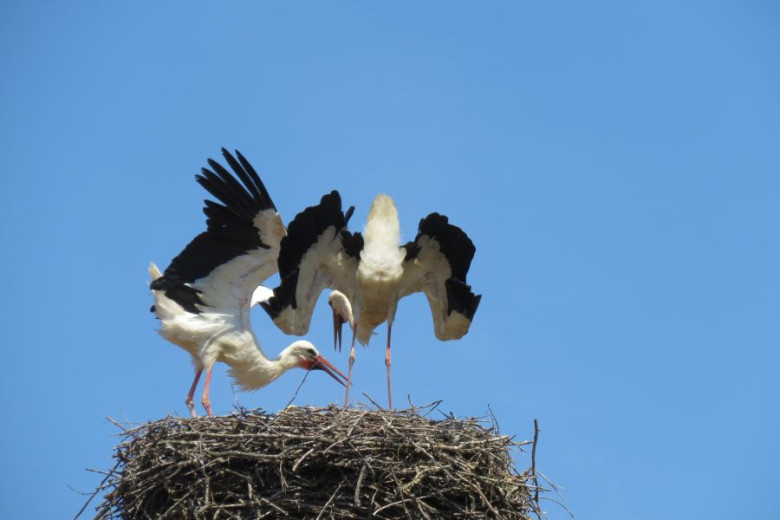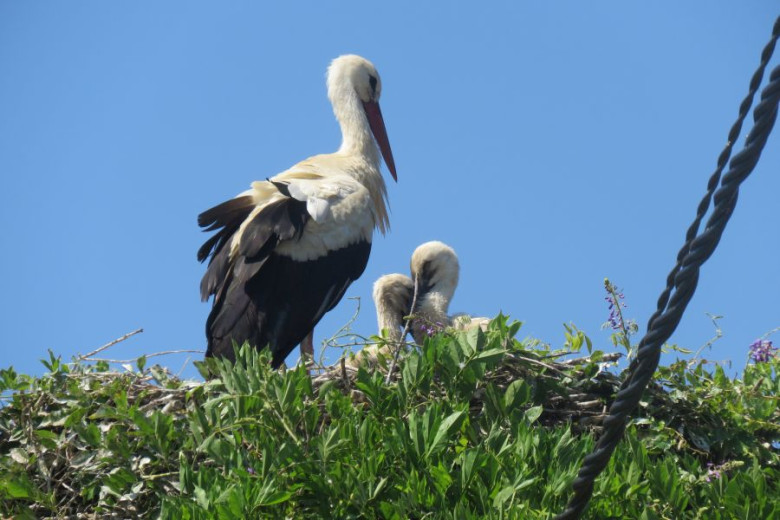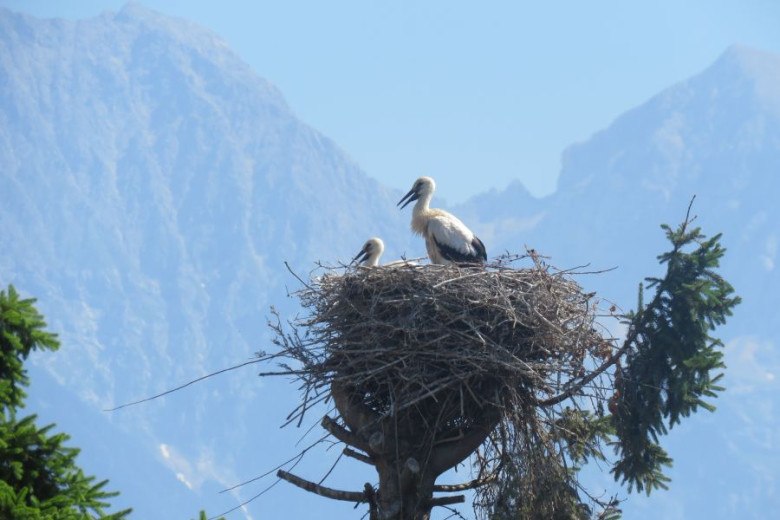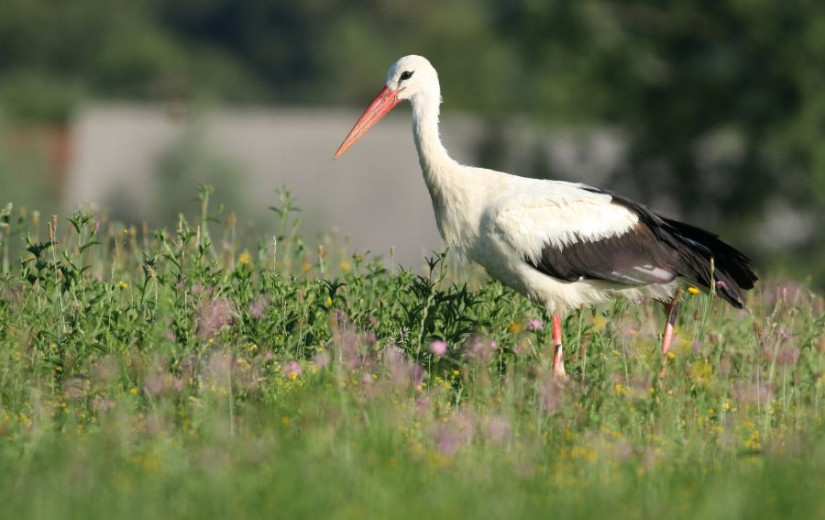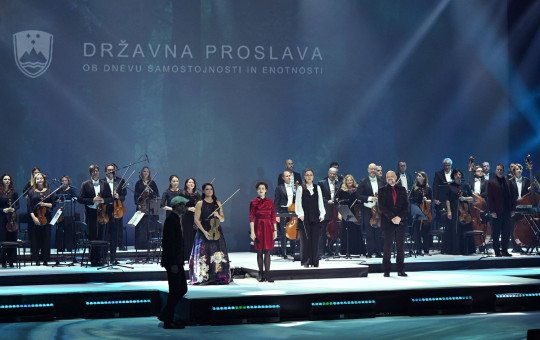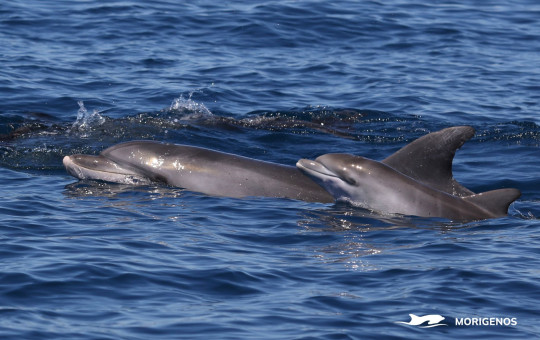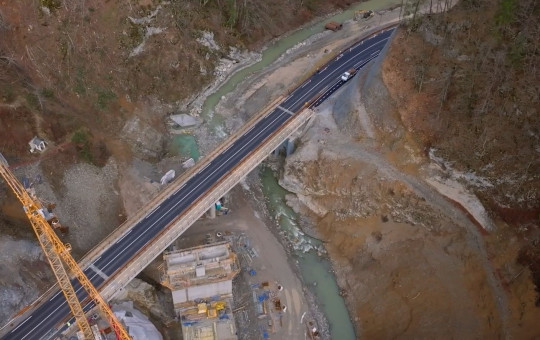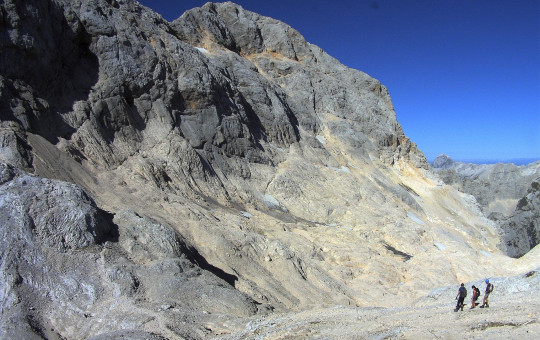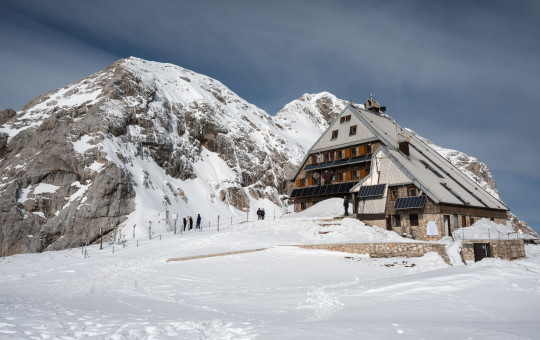Date: 11. August 2025
Time to read: 2 min
White storks – symbols of happiness, love and new life – are thriving in Slovenia. This year's census, carried out by DOPPS – BirdLife Slovenia, brought record-breaking results: 321 pairs of white storks nested across the country, and 807 chicks successfully fledged – 134 more than the year before. This is the highest number recorded since the census began.
Already in 2023 and 2024, storks impressed with a record number of occupied nests. Last year, 311 pairs nested in Slovenia, and 673 young birds fledged – which was also a historic result at the time.
While one plants peas, the other builds a nest
Although the white stork is considered a symbol of the Pomurje region, it now nests almost all over Slovenia. Locals have grown attached to them as if they were real neighbours. Storks are curious, resourceful and always nearby. "One lady told me how she was planting peas in her garden and sticking small sticks in the ground for support," recalls Urša Očko from DOPPS – Birdlife Slovenia, sharing one of the anecdotes told by a local resident. "But a stork, that was just then building its nest, was following her and all the carefully placed pea supports quickly ended up in the stork's new home." Sometimes locals deliberately leave piles of branches from spring tree pruning so that the storks can repair their nests.
In fact, local residents are indispensable partners in the white stork census, which the society has been conducting since 1999. Every year, between the end of June and the beginning of July – when the chicks are big enough to be seen – experts from the society and volunteers visit all the nests in Slovenia.
They also talk with the locals who share interesting stories from the nesting season – for example, how the nesting progressed, whether there were any squabbles over nests and when the storks returned.
-
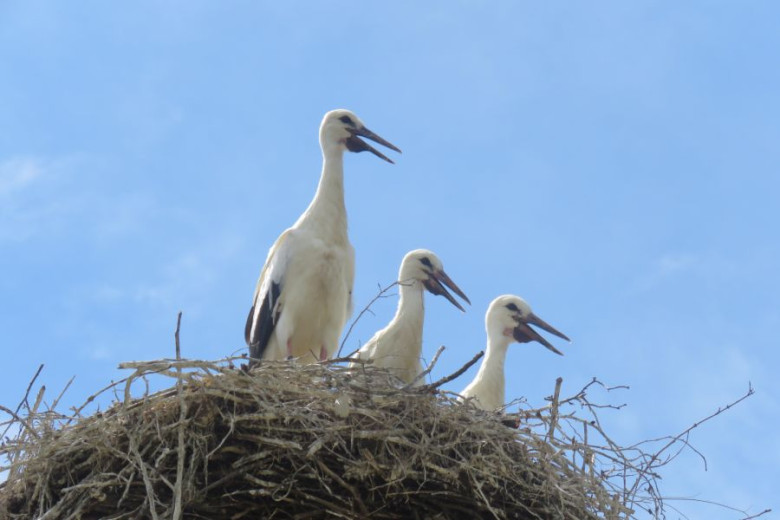 The locals are very fond of white storks nesting near their homes, and sometimes even give names to the storks and their chicks. Photo: Urša Očko
The locals are very fond of white storks nesting near their homes, and sometimes even give names to the storks and their chicks. Photo: Urša Očko
-
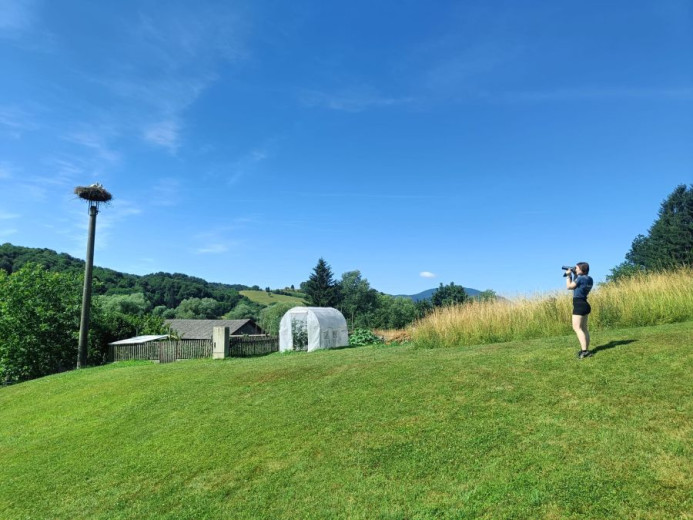 This year, 13 surveyors visited around 400 nests across Slovenia. Photo: Katja Črnec
This year, 13 surveyors visited around 400 nests across Slovenia. Photo: Katja Črnec
-
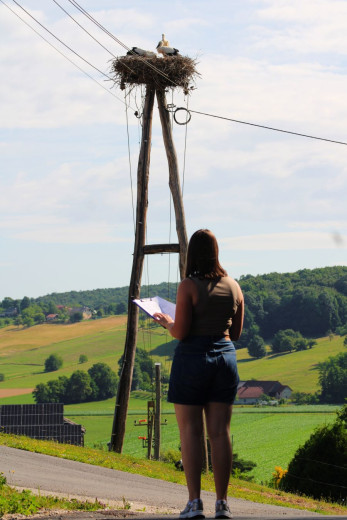 Every year, DOPPS – BirdLife Slovenia members and volunteers check whether the nests are occupied and how many chicks there are. Photo: Zarja Platovšek
Every year, DOPPS – BirdLife Slovenia members and volunteers check whether the nests are occupied and how many chicks there are. Photo: Zarja Platovšek
The locals also notice details that surprise even the experts. "This year, at two nests in two different locations in Slovenia, locals noticed that at the beginning of the nesting season, three adult storks stayed together, coexisting peacefully. This is very unusual, as nests are usually occupied by a single nesting pair that defends the nest from others. By the end of the season, only one pair remained in each nest, but the sight of three adult storks in one nest certainly raised a few eyebrows," says Urša Očko.
Growth of the stork population is also linked to global warming
The white stork is one of the species that benefits from milder winters, which allow for shorter migrations or even wintering in Europe, a trend experts have also observed in Slovenia. But the stork population is growing not only in Slovenia, but elsewhere as well. Preliminary results of an international white stork survey show that the global stork population has increased by more than 20% over the past ten years.
-
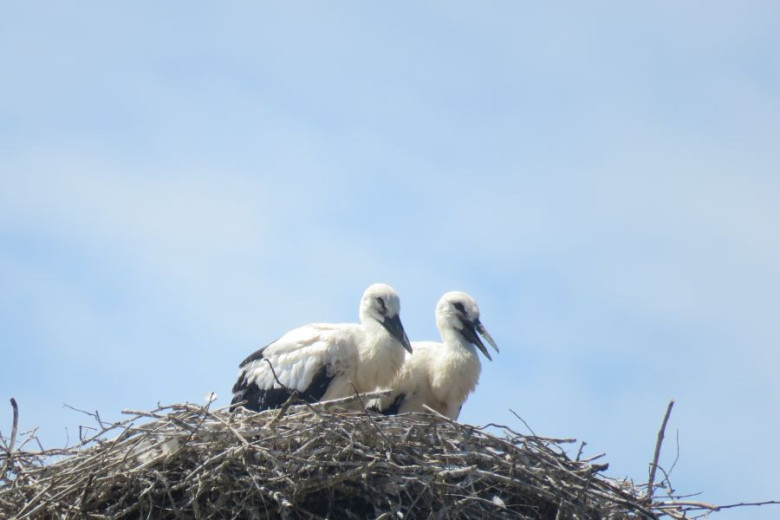 The white stork has benefited from global warming, with milder winters allowing shorter migrations or even wintering in Europe, closer to breeding grounds – a trend seen in Slovenia as well. Photo: Urša Očko
The white stork has benefited from global warming, with milder winters allowing shorter migrations or even wintering in Europe, closer to breeding grounds – a trend seen in Slovenia as well. Photo: Urša Očko
-
 Warmer spring temperatures and earlier arrivals let white storks start nesting sooner, boosting chick survival. Photo: Urša Očko
Warmer spring temperatures and earlier arrivals let white storks start nesting sooner, boosting chick survival. Photo: Urša Očko
As Urša Očko explains, "Migration is one of the most dangerous periods in a stork's life. As many as 75% of young storks do not survive migration. So milder winters that allow shorter routes or even wintering closer to their nesting sites contribute significantly to higher survival rates and population growth." Migration is extremely strenuous for storks, as they travel as far as Sudan and face numerous dangers along the way, including poaching and open rubbish dumps where they forage for food but risk poisoning or becoming entangled in the rubbish and dying.
Weather in May also affects stork reproduction, as this is the time when chicks hatch and they are very sensitive to low temperatures.
"Chicks lack the ability to regulate their body temperature and can become hypothermic. During heavy rain, they can even drown in the nest," says Urša Očko, listing some of the dangers chicks face.
It’s also worth noting that stork nests are enormous, often more than 1.8 metres tall and about 2 metres wide. Rainy weather can also reduce food availability, as prey is less active. If food is scarce, a stork may push one or even all chicks out of the nest if it senses it will not be able to feed them.
Experts are unable to predict whether white storks will continue to benefit from global warming, as they warn that global warming also brings increasingly frequent extreme weather events, such as severe storms and droughts, which can seriously threaten nesting success and survival, especially of young birds.
The stork is a vulnerable species in Slovenia
Storks are mainly threatened by the disappearance of wet meadows because they need a varied and abundant food supply, which they find in these meadows, to successfully raise their young.
They feed mainly on insects such as grasshoppers and beetles, as well as mice, voles, moles, earthworms, amphibians and reptiles, and even fish.
Storks are therefore regular companions of mowers. "Locals love to watch a whole flock of storks gather on freshly mowed meadows – not only local birds, but also those from the surrounding area. Research has shown that storks can smell mown grass from more than two kilometres away. If the wind is blowing in the right direction, storks from the surrounding area will also take advantage of the opportunity to feed," Urša Očko reveals another interesting fact about the life of storks.
White storks often nest on electricity poles, which also poses a danger to them. This is either due to direct contact with uninsulated wires or collisions with power lines. Young storks, which are less experienced at flying, are particularly at risk.

